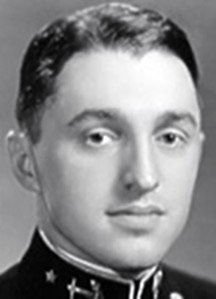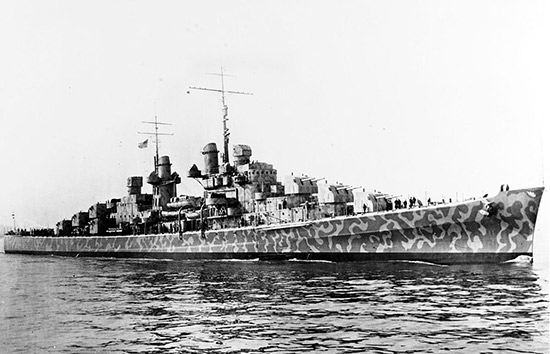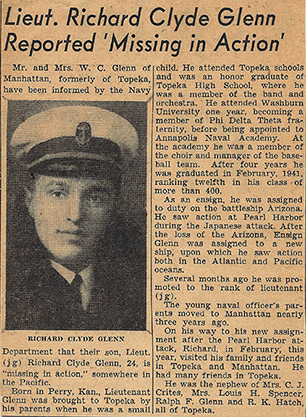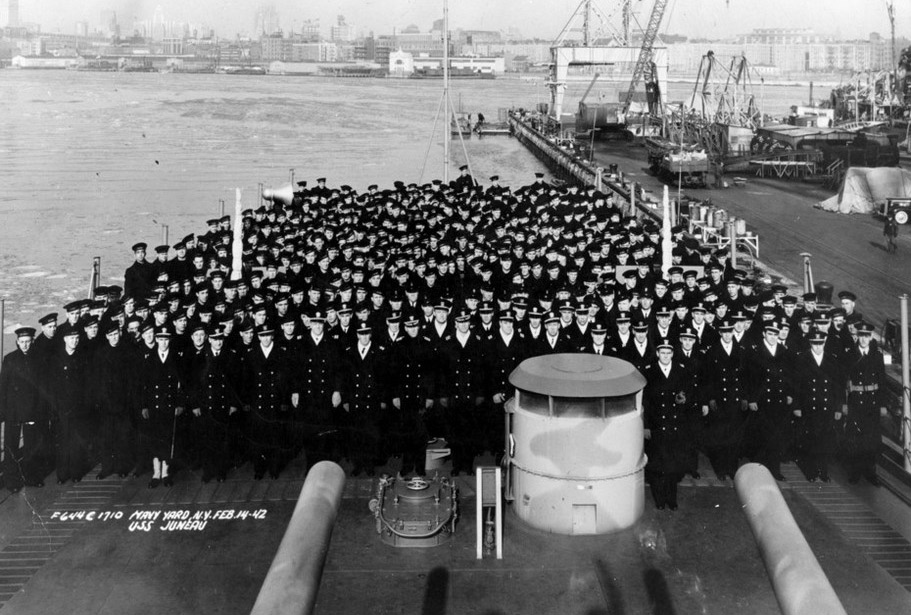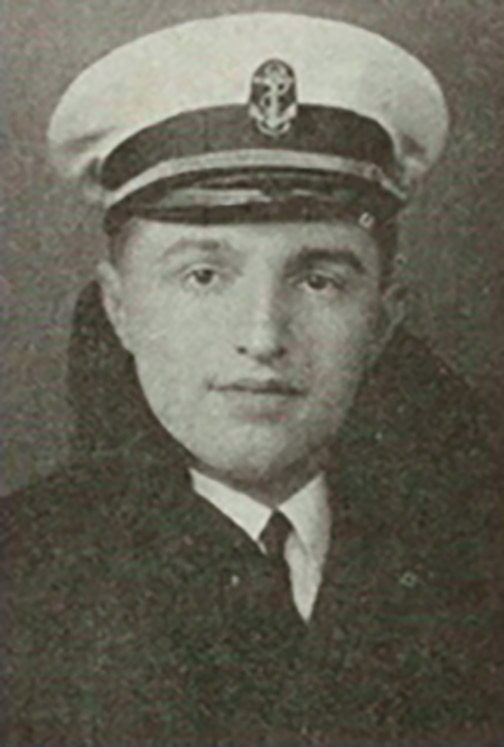Richard Clyde Glenn
Richard Clyde Glenn graduated from the United States Naval Academy at Annapolis, Maryland in the Class of 1941. Richard and his classmates must have been acutely aware of the political situation in Europe and East Asia as their graduation approached, yet at the same time must have been eager to put their training to the test.
In early December 1941 Lieutenant Junior Grade Richard Glenn was stationed with the Pacific Fleet at Pearl Harbor in Hawaii. When the Japanese struck on December 7th, not only did Richard find himself caught at the scene of America’s first battle, he was at Ground Zero. Richard was a junior officer assigned to the battleship USS Arizona. The Arizona was a major target for the Japanese, representing as it did the might of the United States Navy. Yet as often happens in war, a lucky shot made all the difference: a single Japanese bomb struck the battleship’s ammunition storage compartment and crippled the ship with a massive explosion. 1,177 American servicemen aboard the Arizona were killed that day. Miraculously, Richard Glenn was among the few survivors.
The war was no less perilous for Richard in the coming months. As America’s war effort intensified new naval ships were hurried into production. One such brand new vessel was the light cruiser USS Juneau. The Juneau was commissioned in February 1942 and Lieutenant Glenn was among its first crew members.
Also assigned to the Juneau were the soon-to-be-famous Sullivan brothers. The Sullivans were five brothers who had all joined the Navy at the outbreak of war and found themselves assigned to the same ship. Regulations at the time allowed family members to serve together in the various branches of service. It was thought that such personal connections between servicemen would aid in recruitment and could help provide support and comfort to troops in difficult situations. What they did not consider at the time was that these benefits might be outweighed by the hardships it might cause to their families back home.
The Juneau was quickly thrown into the thick of the action. Its first major action was one of the most important naval engagements of the war: the Battle of the Santa Cruz Islands. Occurring on October 26, 1942, Santa Cruz Islands was the fourth of five engagements between U.S. and Japanese aircraft carriers during the war. As part of the critically important Solomon Islands campaign, the U.S. victory was a major blow to the Japanese, and the Juneau played a vital role, shooting down as many as 18 Japanese aircraft during the battle.
The following month, too, was fateful for the Juneau. On November 12th the Juneau was engaged in the Naval Battle of Guadalcanal. The naval battle was a fierce, close quarters “knife-fight” between Japanese and American ships which became interspersed with one another in the chaos. It was an extremely deadly fight. The only two American admirals to be killed in a surface engagement in the whole war both lost their lives in the melee. Also among the casualties were almost all of the men of the Juneau.
During the battle the Juneau was struck by a Japanese torpedo and badly damaged. The next morning the Juneau and a few other damaged American vessels departed from the rest of the fleet to seek repairs at a friendly port. Once the wounded ships had separated from the fleet, however, a lurking Japanese submarine pounced. Juneau was struck again in the very same spot as before by another torpedo. The resulting explosion was so devastating that the whole ship went down in less than a minute.
Presuming that there were no survivors and needing to escape to safety, the other American ships continued on their journey for safe harbor without conducting a search of the Juneau’s wreckage. Out of its crew of 697 men approximately 100 survived the initial sinking only to be abandoned in the water. For days the men languished in the open sea, preyed upon by sharks and suffering from thirst in the blazing sun. By the time the men were eventually discovered all but ten had perished. It is unknown when or how exactly Lieutenant Richard Glenn died, but he was reported missing after the sinking and never made it home.
The media attention was focused primarily on the fate of the Sullivan brothers. All five of the brothers perished at sea with most of the rest of the crew, and the tremendous blow to their family back home ensured that their story received widespread attention. Yet Riley County’s Richard Clyde Glenn and so many others made the same tragic sacrifice. We honor all of their service.
